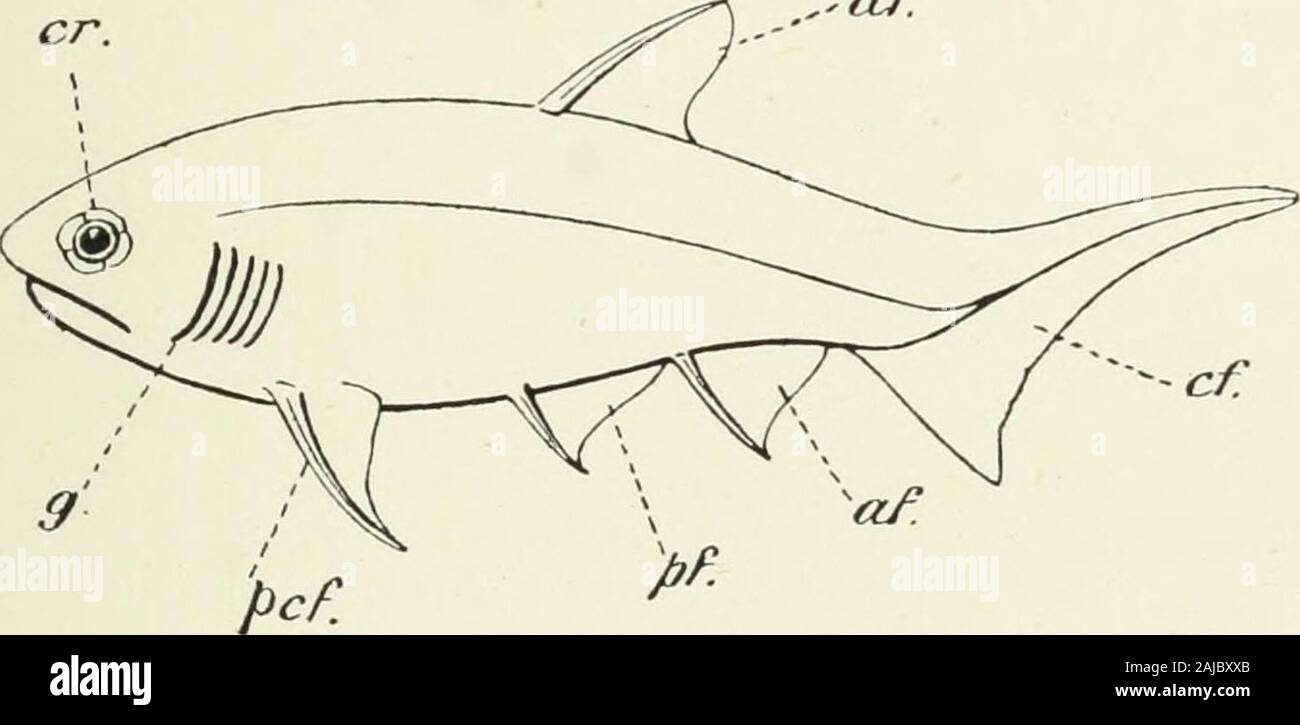A treatise on zoology . to the caudal fin, in rows simulatinglepidotrichia, and to a less extent on to the other fins also. Onthe head they increase in size and form a covering of close-fittingplates. Four or more similar plates surround the orbit. The ACANTHODII 189 scales and the spines are proliably of similar origin ; and ridge-scales, somewhat intermediate in shape, may extend from the baseof the dorsal fin on to the head {Parexus). A varying number of spines may also be found between thepectoral and the pelvic fin (Figs. 156, 164); their presence hasbeen taken to indicate the former cont

Image details
Contributor:
The Reading Room / Alamy Stock PhotoImage ID:
2AJBXXBFile size:
7.1 MB (135.6 KB Compressed download)Releases:
Model - no | Property - noDo I need a release?Dimensions:
2261 x 1105 px | 38.3 x 18.7 cm | 15.1 x 7.4 inches | 150dpiMore information:
This image is a public domain image, which means either that copyright has expired in the image or the copyright holder has waived their copyright. Alamy charges you a fee for access to the high resolution copy of the image.
This image could have imperfections as it’s either historical or reportage.
A treatise on zoology . to the caudal fin, in rows simulatinglepidotrichia, and to a less extent on to the other fins also. Onthe head they increase in size and form a covering of close-fittingplates. Four or more similar plates surround the orbit. The ACANTHODII 189 scales and the spines are proliably of similar origin ; and ridge-scales, somewhat intermediate in shape, may extend from the baseof the dorsal fin on to the head {Parexus). A varying number of spines may also be found between thepectoral and the pelvic fin (Figs. 156, 164); their presence hasbeen taken to indicate the former continuity of these two fins (Cope, A. S. Woodward [503]). It is to be noticed that there is no con-centration of the base of the fins, no notching of the posterior edgesuch as is found in other fish, Avith the exception of the Clado-selachidae, the fin jiassing gradually into the body behind. The lateral line runs usually between two rows of scales, as inElasmobranchs (Fig. 156, C). But in Euthacanthiis gracilis it was , .^. Fio. 15S. Restoration of Chcintainthiis Murchisoni, Ag. (After Traquair.) c./, aniil, c.f, caudal, d.f, dorsal, iw.f, pectoral, and p.f, pelvic tin ; c.r, eirciimorbital ring ; y, five branchial slits. covered over and enclosed by double rows of modified scales(Dean [111]). Of great interest is the skeleton, which shows certain unexpectedpoints of Iesemblance to that of the Osteichthyes. The notochordappears to have been persistent and unconstricted; there areslender neural arches, and similar haemal arches thickened at thebase of the hypochordal fin. Traces have also been found(Dean [HI]) of dorsal radials forming a row separate from thevertebral column. Eadials also appear in the front region of thehypochordal fin strengthened with dermal scales. The skull andvisceral arches seem to have closely resembled those of theumphistylic Elasmobranchs (Fig. 159). The palato-quadrate hasa large otic process, the hyomandibular is elongated, the fivebranchial arches have t